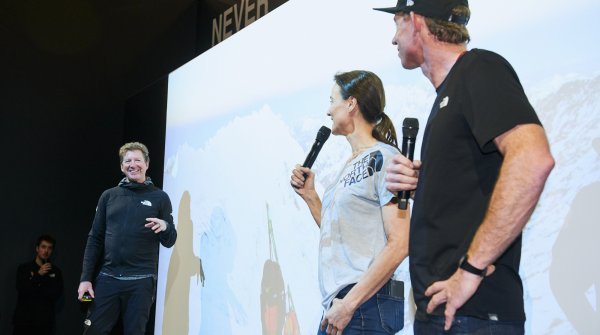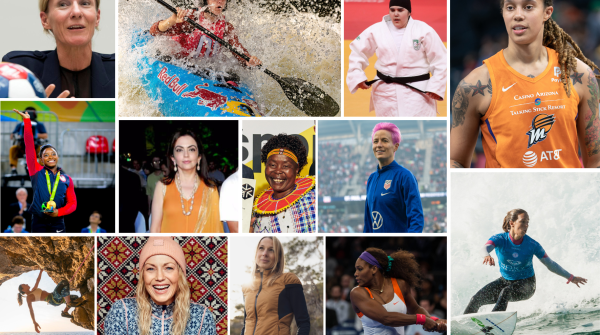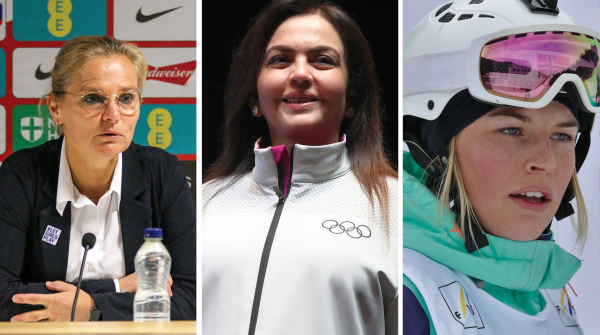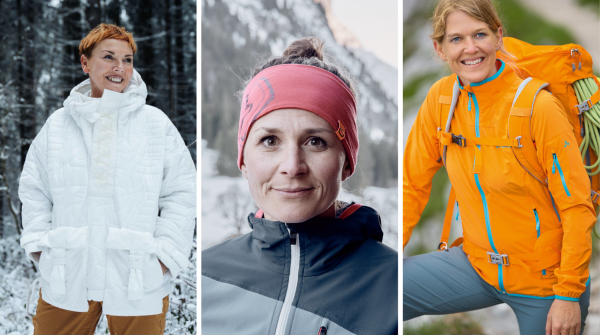
Auer has been climbing since he was twelve years of age: In 2007, the math and sports teacher climbs free solo the 37-pitch route Via Attraverso il Pesce (“Path Through the Fish”) in the Marmolada South Wall, and overnight becomes the shooting star of the climbing scene.
In an interview with ISPO.COM, Auer talks about the difficult months after the death of his climbing colleague, recently aborted expeditions with David Lama, and filming with Reinhold Messner.
ISPO.COM: Mr. Auer, you’ve been back from your last expedition for a couple of weeks, where together with David Lama and Alex Blümel you tried to be the first to climb Annapurna III via the Southeastern Face. How did it go for you?
Hansjörg Auer: We failed. In 1981, a British team had a try at the route we attempted. They did get pretty far, but they didn’t reach the summit. The line is really demanding, very challenging, but that’s exactly why it’s so appealing. Add to that the fact that the path to the mountain, after a severe landslide at the end of the 80s, is no longer very passable. There are no more agencies that send carriers into the region. In 2006 Nick Bullock was the last mountain climber to try to reach basecamp on foot, but had to quit.
How did you resolve the problem?
By now you need a helicopter to fly you from Pokhara into basecamp.
What were the greatest challenges awaiting you on the mountain?
The Annapurna region is fundamentally difficult due to its weather. A tropical climate prevails in the valley, while a very humid climate awaits in the high elevations. In the spring, mountain climbers make use the long days, but have to take into account lots of rainfall. It is less humid in the fall, and the days are distinctly shorter in return. We decided on the spring. Our main problem then was the weather. With the exception of five days, we had rainfall every single day. For five weeks.
And those five fine weather days were definitely not all at a stretch.
(laughs) No, quite the opposite, they were all divided up. There’s nothing to do about that.

How much frustration emerged in base camp?
Essentially, it’s a real privilege to be able to decamp into this region at all. I’ve never seen such a beautiful moraine landscape before in my life, at any rate. You sit in base camp at 4,600 meters, in a little pocket between Annapurna III and IV and the rear side of the Machapuchare, and you realize that only a handful of people have been able to see this breathtaking view at all.
“80 percent of expeditions fail”
When you fly into base camp, acclimatization isn’t necessary right away.
We acclimatized ourselves directly before the expedition in Zermatt, and then ascended onsite on the east ridge of Annapurna III at a height of 6,000 meters. We spent a couple of days there. Following that, we started an attempted on the Southeastern Face. The first of four days on the wall went great. But then the weather threw a wrench into our plans.
How should we imagine the freak weather?
You wake up at 6 a.m., climb two or three pitches in the cold, then it’s perfect for a couple of pitches, then at 11 it starts to snow every day. Even though the large-scale weather pattern wasn’t nearly as bad. A heavily changing microclimate forms around Pokhara.
Were you able to gather some valuable experience for another expedition there?
Now that we’ve seen the line once with our own eyes, I can say this: it’s difficult, but doable. A really good Alpine-style project. In total there have been four or five expeditions that have attempted the Southeastern Face to date. Nevertheless, only the Brits and us have actually gotten in. The climbing is very exposed and difficult.
How disappointed is a mountain climber when projects fail – at least on the first attempt?
Sure, you’re disappointed at first, but then you have to be honest: 80 percent of expeditions that go to the limit fail the first time.
David Lama, himself one of the very best in mountain sports – was along in the team. How is it when two alpha leaders are on the road together? Does the expertise double or is there also a subliminal sense of competition?
We’re not competitors by any means! David and I aren’t the best of friends, to be sure, but the sport has already brought us together for a number of years now. It’s more than a friendship of convenience by far. Sure, there are occasional discussions between us. (laughs) David is the type of person who sometimes likes to seek out controversy.

Does controversy do an expedition good?
I think so, yes. With David, it’s really, extremely casual on the mountain. He’s a very strong climber. In any case, there’s only one rope on the mountain – and we both pull on it.
What do the various sponsors say when the two of you head out together?
Sponsors can’t be the reason not to do joint projects. If you head out with David Lama, you have to understand that he’s going to play the lead role in the media. But not because David orchestrates it that way, but just because he has a much higher profile than I do.
What do your sponsors, like The North Face, say?
The North Face on its own could only lift a project like that with difficulty. And it’s equally complicated with several financial partners together. So they give me the green light and enjoy. The North Face is an ideal partner for me. The collaboration is casual, no pressure, a really nice cooperation. We also implement one or two projects together per year. And if I have something big planned, I pay the costs out of pocket, if need be. Then I relinquish any rights and can do what I want with the photos and videos and stay free and flexible. If you let everything you do be financed by a company, then technically speaking you’re just taking on a job. If you bear the expedition costs yourself, then there’s no one to meddle with you.
„You can’t shake Gerry’s death“
Flashback: On October 25, 2015, you stand with Alex Blümel and Gerry Fiegl on the summit of Nilgiri South (6,938 m). The first ascent through the South Wall, a mountain climbing milestone, has been successful. In the descent, Gerry Fiegl falls to his death in front of you. In this context, do you talk about it as a “success”?
It’s not a success.
Is reaching the summit no longer of value to you personally?
You go on the expedition in order to stand on the summit. That’s the sole reason why we do it. We were successful, the climbing was super difficult. Up to that point, we’re talking about a success. But if someone has an accident in the descent, you quickly realize what that loss means overall.
What had happened?
Alex and I first noticed in the last bivouac before the summit that something wasn’t right with Gerry. He’d never spoken about any kind of problems himself during the entire ascent. Mustering the way back via the ascent route was much too dangerous, simply impossible. We had to get to the summit and wanted to climb back down over the rear side as quickly as possible. But things with Gerry were going more and more downhill. He was probably suffering a cerebral edema. In the descent, he fell in front of our very eyes.
There was nothing you could do?
You yourself are at the very limit! Only other mountain climbers can understand, it’s difficult to convey this situation in a way that’s easy for an ordinary mortal to understand.
How does someone process that kind of tragedy?
There were many moments during the Annapurna III expedition that weren’t easy. For Alex, too, who went on the road with Gerry much more often than I did. Something like that does change you, though. You can’t shake it. Maybe sometimes you can tune it out, but you don’t get away.
How do you face the parents?
That’s very difficult. You have to explain to the parents why you aren’t bringing their son home. We didn’t have a chance to recover him. I tried to explain to Gerry’s father what happened. My brother Matthias erected a small memorial at a chapel that Gerry visited before his expedition. I was there directly after my return from Annapurna III, and met Gerry’s mother on the way back. Those kinds of moments are very hard. But we aren’t made of stone. Gerry is missed. By us, too.

Reinhold and Günther Messner come to mind right away.
Reinhold Messner would also like to use our film material to shine a brighter light on the subject: how mothers process the fact that their sons climb large mountains. Our conduct towards parents and relatives is actually pretty irresponsible. But our passions wins nevertheless. We do it regardless of whether our parents let us. Reinhold Messner was at my house last week. We discussed it for a whole afternoon. Naturally, the film will only develop if all of the parents agree.
“The allure is greater than common sense”
Apropos irresponsible: Last summer, you climbed the “Mephisto” route on the Sas dla Crusc in the Dolomites, rope free. It read on Facebook that you had waited for four years for the perfect moment to realize this undertaking.
Everything fit on that day. As a child I always dreamed of this tour. It was first climbed by my role model, Reinhard Schiestl. I devoured his stories as a kid. Climbing this route rope free was a dream.
Free solo – just why do you do it?
The allure of doing it is simply stronger than the warning of common sense.
In 2007, you climbed the 1,220 meter-long “Path Through the Fish” route, free solo. Did that day change your life?
In retrospect, totally. People began to take notice of me.
Is this free solo a type of mark?
Yes, people connect it with me.
Were there confidants then?
My brother and my mother were in the know. I sat at the kitchen table and asked my mom to cook a serving of noodles, since I would need lots of energy in the next few days. My mother was shocked. Sure enough, tears flowed. But it was important to me back then to tell her the truth. When I decamped to the Schüsselkarspitze in 2011, to climb the “Bavarian Dream” free solo, I kept it quiet.
Why?
Before – I still wasn’t a professional climber – it was clear to everyone that I was only doing it for myself. Now that I have sponsors, it could be insinuated that I was only doing it to deliver something big. That’s why I prefer to keep quiet sometimes.
Do you believe that this drive will lapse someday?
I believe so, yes. At latest when you have children, you become more sensible. “Mephisto” was once again my first free solo after a four year break. (laughs) So the gaps are getting bigger.
As a Judmaier double in Messner film
The “Tiroler Tageszeitung” newspaper reported that Reinhold Messner will make his directorial debut with “Still Alive,” and that you were along for the ride during filming. What is the film about and what role do you play?
We’re making a movie about the spectacular rescue operation on Mount Kenya in 1970. That’s when Tyrolean mountain climber Gert Judmaier was severely injured after a fall. His companion Oswald Oelz organizes help. After eight days on the wall, Judmaier is saved by the Tyrol Mountain Rescue. He survives. My brother Vitus and I act as doubles. I’m Judmaier, my brother plays Oswald Oelz.
How was it on set?
It was a cool job. Being able to spend time with Reinhold is fun. He’s just an interesting personality. Aside from that, Messner know his way around the history of mountain climbing like no other.
This is Hansjörg Auer online:
Editor's note: Hansjörg Auer was hit by an avalanche on 16.04.2019 together with David Lama and Jess Roskelley in the Canadian Rocky Mountains. The bodies were recovered on Easter Sunday (21.04.2019). We grieve for three great people. Our sympathy is with the relatives.

 OutDoor by ISPOOutDoor in transition
OutDoor by ISPOOutDoor in transition
- Awards
- Mountain sports
- Bike
- Fitness
- Health
- ISPO Munich
- Running
- Brands
- Sustainability
- Olympia
- OutDoor
- Promotion
- Sports Business
- Textrends
- Triathlon
- Water sports
- Winter sports
- eSports
- SportsTech
- OutDoor by ISPO
- Heroes
- Transformation
- Sport Fashion
- Urban Culture
- Challenges of a CEO
- Trade fairs
- Sports
- Find the Balance
- Product reviews
- Newsletter Exclusive Area
- Magazine



